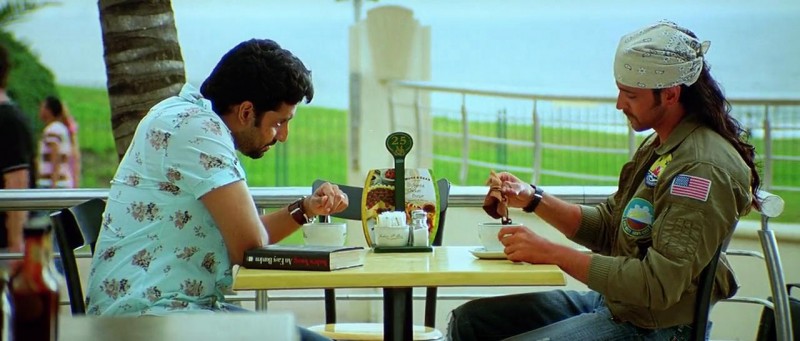
Bollywood has always been renowned for its iconic scenes and enduring dialogue that appeal to viewers across generations. The use of a straightforward coin to make crucial decisions appears in two such scenes in the Indian film industry. One happened in "Dhoom 2," a contemporary classic, when Abhishek Bachchan's character recalled his father's propensity for tossing coins. The other occurred in the classic epic "Sholay," where Amitabh Bachchan's well-known character Jai used the same technique to decide his fate. In this article, we analyse these two masterpieces of cinema and examine the significance of the coin flip as a plot device and a window into the characters' inner conflicts.
Bollywood cinema's limits were pushed by the high-octane action thriller "Dhoom 2," which was released in 2006. Sanjay Gadhvi, who also served as the director, cast Hrithik Roshan as the charismatic and crafty thief Aryan Singh. The tenacious officer determined to bring Aryan to justice was portrayed by Abhishek Bachchan as ACP Jai Dixit. High-stakes heists, cat-and-mouse chases, and exciting action scenes make up the majority of the movie.
ACP Jai Dixit confronts Aryan Singh in a crucial scene of the movie. Jai says he is aware that Aryan's father used to decide by tossing a coin during their heated exchange. This revelation is a masterful piece of storytelling because it not only gives Aryan more nuance as a person but also serves as a plot device to emphasise the moral complexity of his behaviour.
The coin serves as a metaphor for fate and the illogic of life in this context. The fact that Aryan's father relied on the coin suggests that he thought fate should decide his course regardless of the results. Aryan, who leads an adventurous life where he trusts his instincts and luck, seems to have been influenced by this philosophy.
The coin becomes a representation of Aryan's internal conflict as he deals with Jai's accusations and the looming threat of arrest. It sums up Aryan's moral quandary: Should he continue to rely on luck and avoid the law or should he accept responsibility for his actions and come forward? The coin's two sides represent Aryan's own dual nature as a charming burglar with morals.
This internal conflict is expertly captured in Hrithik Roshan's portrayal of Aryan, and the coin ends up becoming a visual motif that highlights the complexity of the character. Aryan's internal struggle to make sense of his choices in relation to his past and future is reflected in it, so it serves as more than just a tool for decision-making.
One of the best Indian films ever is frequently cited as "Sholay," directed by Ramesh Sippy, and first shown in 1975. The plot of the movie centres on two friends named Jai and Veeru, played by Amitabh Bachchan and Dharmendra, who are hired by a retired police officer to apprehend the ruthless dacoit Gabbar Singh, who is played outstandingly by Amjad Khan.
Jai, played by Amitabh Bachchan, makes one of the most famous choices in Indian cinema in the movie "Sholay," using a coin. Jai tosses a coin when it's time to choose between staying in the village to assist the police officer and leaving. Indicating that they should remain, the coin lands with its "Sikka" (head) side up.
This particular moment is significant because it perfectly captures Jai's character. He is a man of few words and a mysterious character who frequently lets his actions speak for him. The coin toss becomes a representation of his unsaid thoughts and faith in fate to lead him. It also denotes a turning point in the story because Jai's choice ultimately sets off a chain of incidents that help to define the plot of the movie.
The use of the coin toss in "Sholay" goes beyond that of a simple tool for making decisions; it explores the philosophical sphere of free will and destiny. Jai's decision to rely on the coin shows that he is aware of the unpredictable nature of life. It reflects the idea that, in some circumstances, forces outside of our control, such as fate or chance, can lead us more successfully than our logical minds.
Additionally, Jai's character development throughout the movie reflects his deepening love for the village and its residents. Although his reliance on the coin at the beginning of the story is pragmatist, as the plot develops, it takes on the meaning of a symbolising his emotional attachment to the setting and its residents. This simple yet profound act of flipping a coin subtly conveys Jai's transformation from a pragmatic outsider to a compassionate protector.
A coin, for example, can have a profound significance in the world of cinema. In "Dhoom 2" and "Sholay," the use of a coin as a plot device enriches the characters and draws attention to their internal conflicts, convictions, and changes. The revelation made by Abhishek Bachchan to Hrithik Roshan in "Dhoom 2" and Amitabh Bachchan's coin toss in "Sholay" are two examples of brilliant cinematic moments that highlight the strength of storytelling in Indian cinema. These two films serve as a reminder that dialogue-filled pages sometimes can't tell us as much about a character's soul as a coin flip.
The Actor Who Nearly Became Haryanvi Icon in MKBKM
Shahid Kapoor's Journey from Box Office Blues
The Many Shades of Akshaye Khanna: 'Dil Chahta Hai' to 'Humraaz'